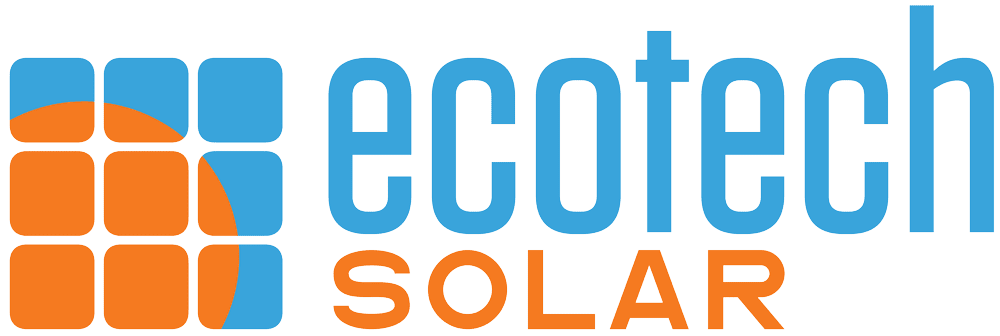Both microinverters and string inverters do the same essential job — converting the DC power from your solar panels into usable AC power for your home. But how they do it, and where they do it, can have major implications for performance, monitoring, shading, and long-term reliability.
What’s the Difference?
- String Inverters are centralized, generally large power electronics, often installed near your electrical panel or on your garage wall. Several groups of solar panels — usually sets of 8 to 12 or more — are connected in a string that feeds into this single inverter.
- Microinverters are small individual inverters installed under each solar panel. Each panel operates independently and converts its own power right at the source.
Pros of String Inverters
1. Lower Cost
String inverters are more affordable, especially for medium to large systems. Fewer components and less labor mean a lower total price.
2. Simpler Maintenance
With one centralized inverter, maintenance and service are more straightforward. If something goes wrong, there’s only one place to check.
3. Proven Longevity
String inverter technology has been around for decades and is known for its reliability and high efficiency.
4. Efficient in Ideal Conditions
In wide-open, unshaded areas with uniform panel orientation, string inverters can operate at peak efficiency with minimal loss.
Cons of String Inverters
1. **Performance Can Be Limited by the Weakest Panel (see below)
If one panel in a string is shaded, dirty, or underperforming, it can drag down the entire string — like a kink in a hose.
2. Less Granular Monitoring
Typically, you’ll get system-level data rather than per-panel insights. That makes it harder to detect specific panel issues without additional hardware.
3. Single Point of Failure
If your string inverter fails (as all inverters eventually do!), your whole system goes down until it’s repaired or replaced.
Pros of Microinverters
1. Per-Panel Optimization
Each panel works independently, so shade, dirt, or malfunction on one panel doesn’t affect the others. This can boost overall energy yield, especially on complex, multi-pitch roofs.
2. Detailed Monitoring
Microinverters offer panel-level monitoring, making it easy to spot problems and track performance in detail.
3. Flexible Design
Ideal for roofs with multiple orientations, dormers, or partial shading — microinverters make mixed-angle arrays much easier to manage.
4. No Single Point of Failure
If one microinverter fails, the rest of your system keeps running — only the affected panel drops out.
Cons of Microinverters
1. Higher Cost
Microinverters are more expensive per watt, and the added hardware and labor can increase total system cost.
2. More Components = More Potential Points of Failure
More parts on the roof means more places something could go wrong — though most microinverters come with long warranties (often 15–25 years).
3. Harder to Service
If a microinverter fails, it’s under the panel — which may require temporarily removing the panel to access it.
**Shading and String Inverters
Performance Can Be Limited by the Weakest Panel
Traditionally, when one panel in a string was shaded or underperforming, it could reduce the output of the entire string — like a string of old Christmas lights where one bad bulb dims the rest.
However, modern string inverters often include MPPT (Maximum Power Point Tracking) — a smart technology that constantly adjusts to get the most energy out of the system, even when conditions aren’t perfect. Modern string inverters include multiple MPPT inputs, allowing different groups of panels to be managed separately.
This means that if one group of panels is shaded (say, by a chimney or tree), it won’t drag down the rest of the system like it would have in older designs.
It’s not quite the same as panel-level control, like you get with microinverters, but it’s a big improvement — and makes string inverters much more adaptable to moderate shading and mixed roof angles than they used to be.
What About the Pacific Northwest?
In the PNW, where we see a mix of cloudy days, tree shading, and varied roof shapes, microinverters often perform well by capturing more usable energy in less-than-perfect conditions. Their ability to handle panel-by-panel variations makes them a strong choice for complex roofs or partial shading.
That said, modern string inverters have come a long way. Thanks to advanced MPPT (Maximum Power Point Tracking) technology and multiple input channels, they now handle shade and mixed orientations far better than older systems. For many homes — especially those with open, unshaded roof planes — a well-designed string inverter system can be a cost-effective and high-performing solution.
In other words: string inverters aren’t outdated — they’re still an excellent fit for the right site.
What’s Right for You?
There’s no one-size-fits-all answer. It depends on your roof layout, shading, budget, and monitoring preferences. This is exactly where a knowledgeable Ecotech Energy Consultant can help: by designing a system tailored to your home, location, and goals — so you get the setup that makes the most sense for you.
Reach out for an Energy Consultation.
